This mysterious recuperation

The DC motor standing in the monowheel can work as a generator, charging the batteries while braking. However, the possibility does not mean that there is a need for recovery. From the fact that people charged the wheels while, for example, descending from the mountain, it can be concluded that recovery in the mono-wheels is still used, but its exact contribution to the braking remained unknown. But recently, the users of the forum Electrotransport.ru made a full-fledged power meter with a logger and saw what happens with the current and voltage when driving. According to the measurement results, recovery is accurate, but another type of inhibition has disappeared somewhere.
A bit of physics
DC motors that stand on mono-wheels have three types of braking.
Regenerative braking . In this case, the engine turns into a generator and converts the kinetic energy into electric current, which goes into the network (electric and metro) or into batteries (electric cars). Regenerative braking is possible when the rotational speed exceeds the ideal idle speed.
')
Rheostatic inhibition . Here the engine also works as a generator, but the energy produced goes into heating the brake resistors. Quite common on the railway.
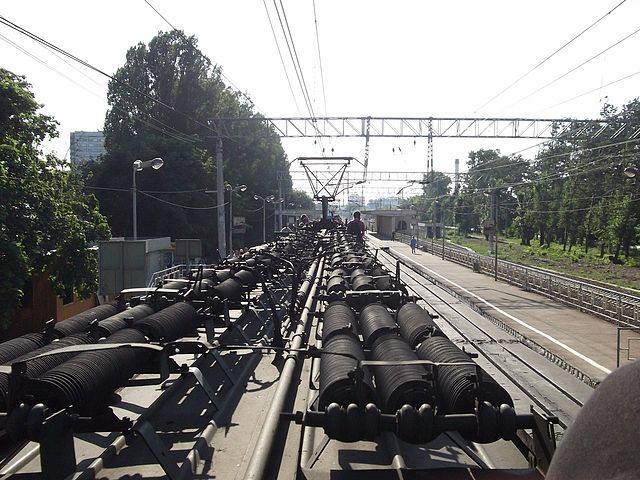
Brake resistors
Reverse braking , it is also braking countercurrent or opposition. In this case, the engine does not turn into a generator, but begins to pull in the opposite direction of motion. For example, if an electric motor pulls up the load, and the hooligan jumps on this load, outweighing the motor's capabilities, the load will begin to fall, and the engine will be in reverse braking mode. In this mode, the current flowing through the windings is much higher than during normal operation, and this can create certain problems.
The specificity of monowheels
Many monowheels do not have front and rear parts, and the controller does not accelerate and does not slow down, and all the time it solves the problem of the inverse pendulum, trying to drive up under the rider, who can use this for spectacular stunts.
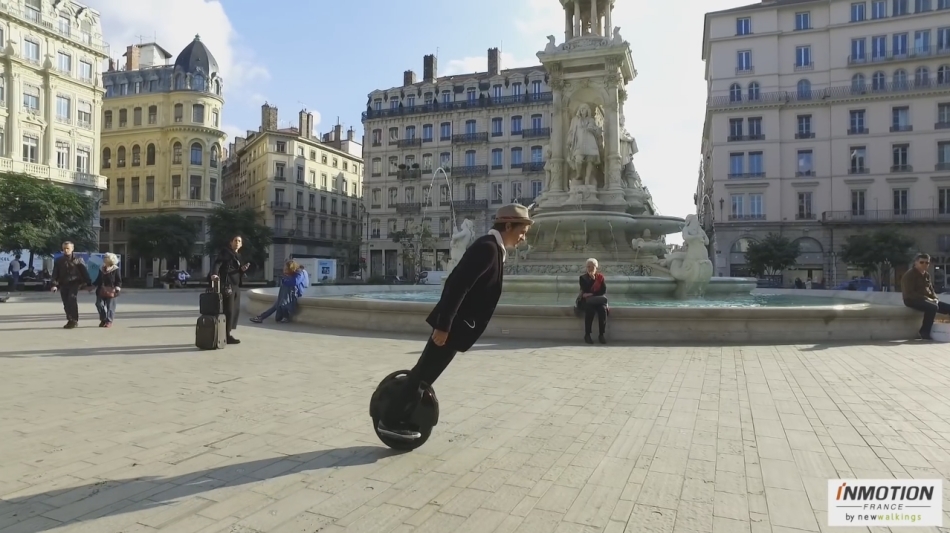
For example, here the rider brakes very quickly and starts to accelerate to the right.
Also, it is known that in the design of the monowheel there are no brake resistors, and rheostatic braking is in principle impossible. Theoretically, it is logical to assume that, in the process of braking, first, at high speed, regenerative braking will be activated, which at some stage will go into braking by opposing, which, if we do not stop pushing the pedal in the same direction, will go into motor mode, and we will go in the opposite direction. But the real measurements were very curious.
Studies on the gland
User Forum Drift3r collected from Raspberry Pi and "nRF24L01 +" power meter with a logger, which was installed in the gap cable from batteries.
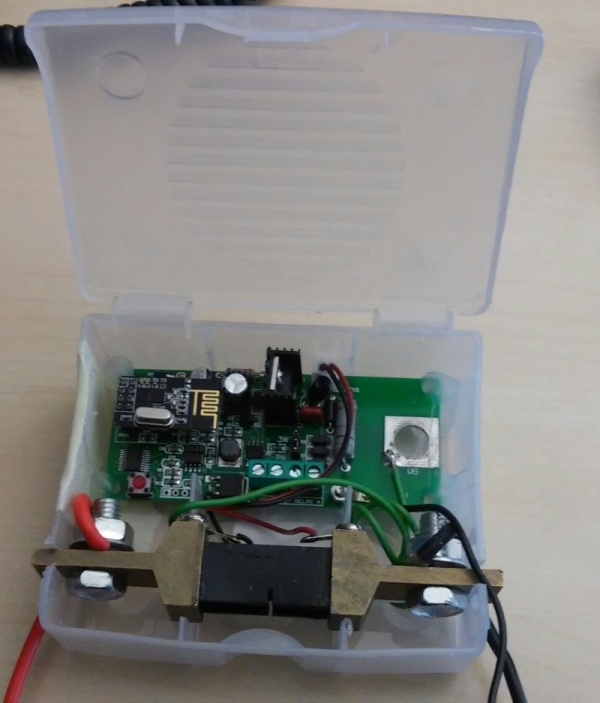
Assembled on the wheel of another Ripido user
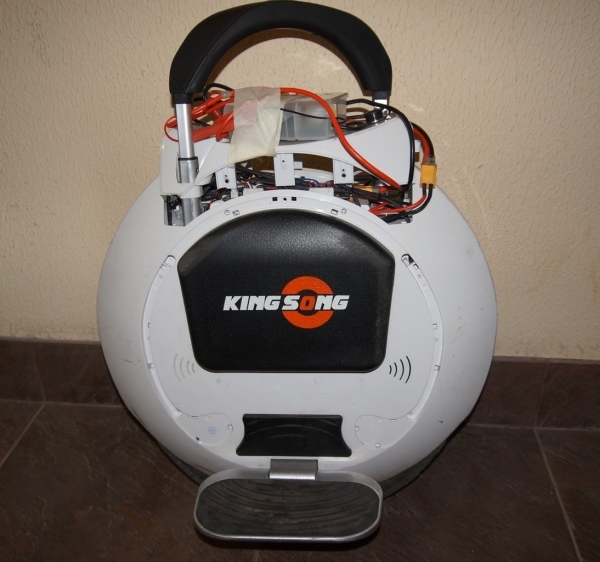
The wattmeter took into account the direction of the current, where the batteries were charged, the current and power went to minus.
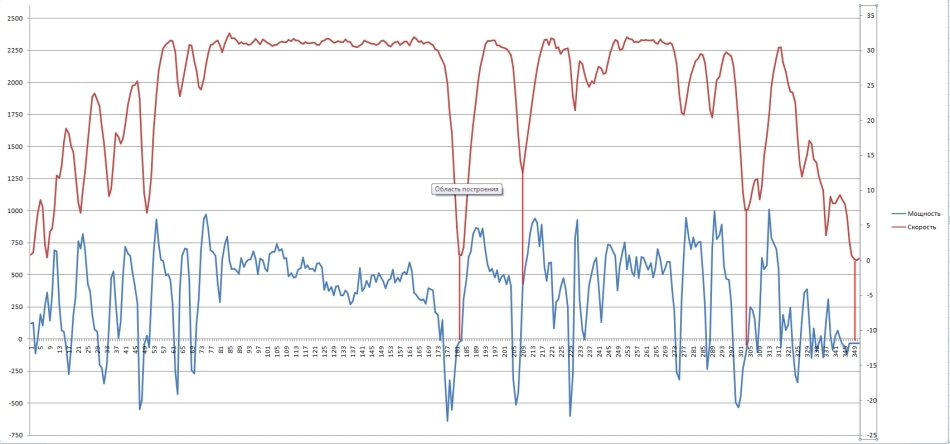
Full size chart
If you look at the red lines, it turns out that in deep steady-state braking, there are no signs of counter-braking - as long as the speed drops, the current flows into the batteries.
It is interesting that the indicators of the built-in logger, if you do not take into account the current modulo, differ from the wattmeter data only in the areas of rather sharp maneuvers.
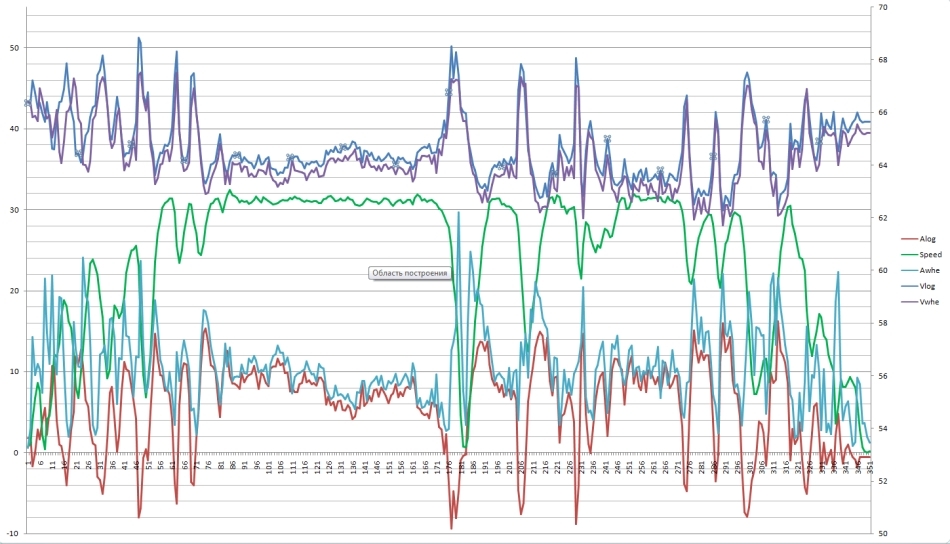
Full size chart, Awhe, Vwhe - built-in wheel logger, Alog, Vlog - wattmeter logs
Hypotheses and possible experiments
How can you explain such graphics?
- Backflow braking was lost due to averaging or out of sync data, the graphics do not reflect the real state of affairs.
- A very low ideal idle speed allows you to brake to almost zero, and we do not notice the transition to counter-current braking
Also, try to conduct the following thought experiment. Situation one - we are rolling down a hill at a speed of 20 km / h. In this case, recovery is obviously working. The second situation is that we are standing on a hill (the monowheel cannot stand, so we easily touch the pillars with our fingers and due to this we do not roll to the side). In this case, we obviously work in a traction mode, because it is necessary to apply an effort in order not to roll down. Situation three - we descend at a speed of 1 millimeter per second from a steep slide, adhering to the pole. In this case, the wheel, obviously, works in the opposition mode, because the final energy balance is negative - it is expended not to slide downhill faster than we move. And somewhere between situations 1 and 3 we will have a transitional moment when the final energy balance will be near zero, it will be energetically advantageous to roll faster, and the movement will require energy costs more slowly.
Practical use
All of these arguments have very simple consequences:
There is a funny story about how a Tesla electric car was charged on the track - it was taken in tow, and the Tesla driver pressed the brake pedal to recuperately charge the batteries. It is the same with monowheels - if you almost have a battery, let your colleague take a tug on a bicycle, scooter, roller skates or monowheel (please take care of yourself and do not try to cling to cars or public transport!).
Mono-wheels have protection against overcharging of batteries. That is, if you are at the top of the mountain with a full battery, an attempt to descend will be coupled with alarm signals from the battery overcharging mono-wheel - they usually start beeping and pedaling (instead of the horizontal position, their front will be higher than the back). But it is easy to fix - after driving a hundred meters up, it is desirable to quickly, you can go down a kilometer or two. Life hacking to repeat until the end of the descent.
Conclusion
The publication used photographs of users of Ripido and Drift3r , themes where recuperation was discussed here and here . Also used freeze-frames from the commercial with the participation of the recent winner of the competition of mono-wheel talents Damien Goe. Damien is a professional acrobat, so the video, in my opinion, is beautiful in itself and clearly shows the possibilities of any good monowheel.
Source: https://habr.com/ru/post/398761/
All Articles